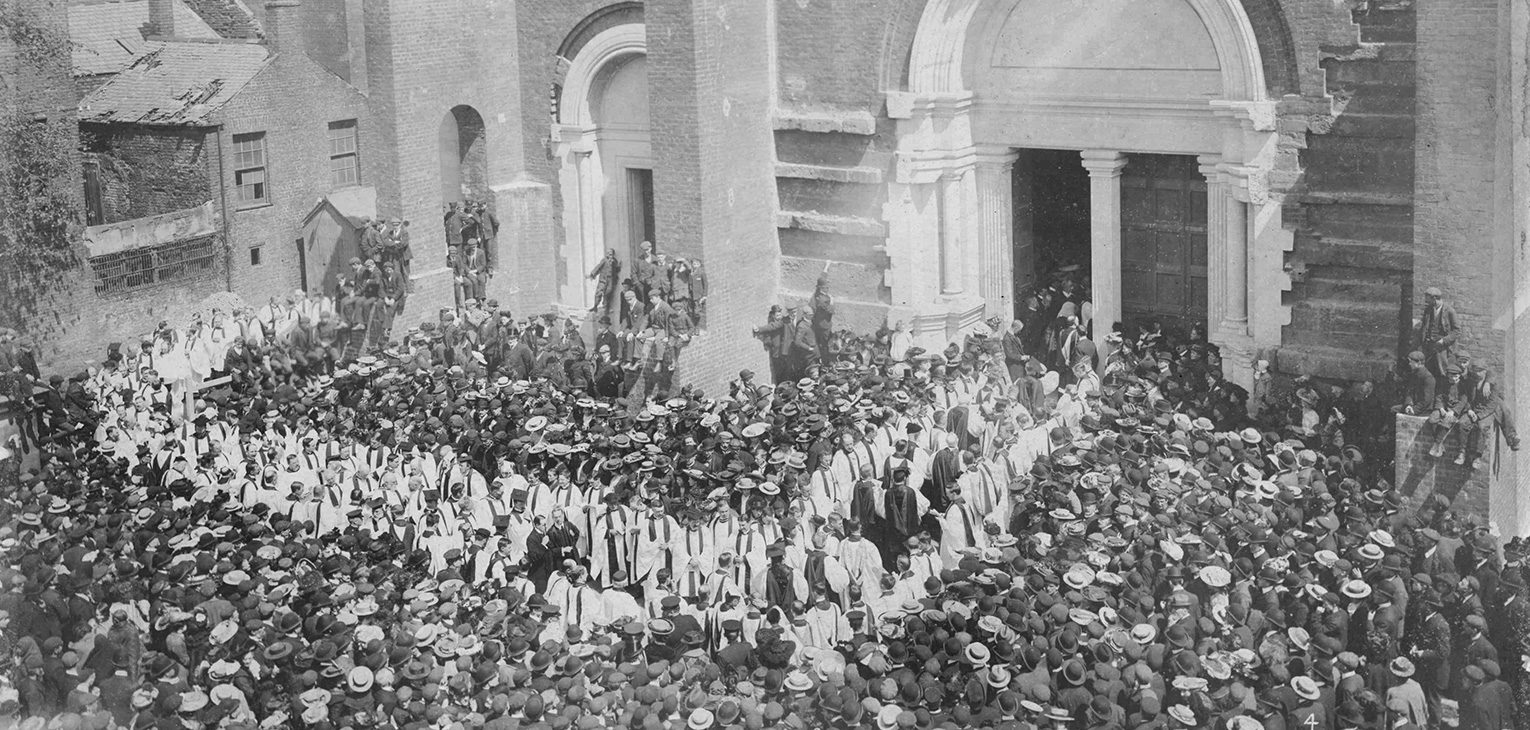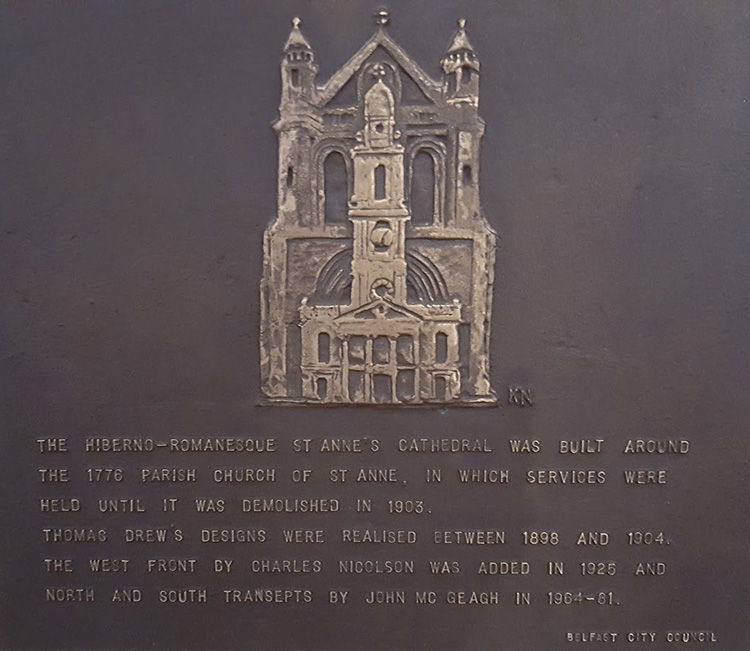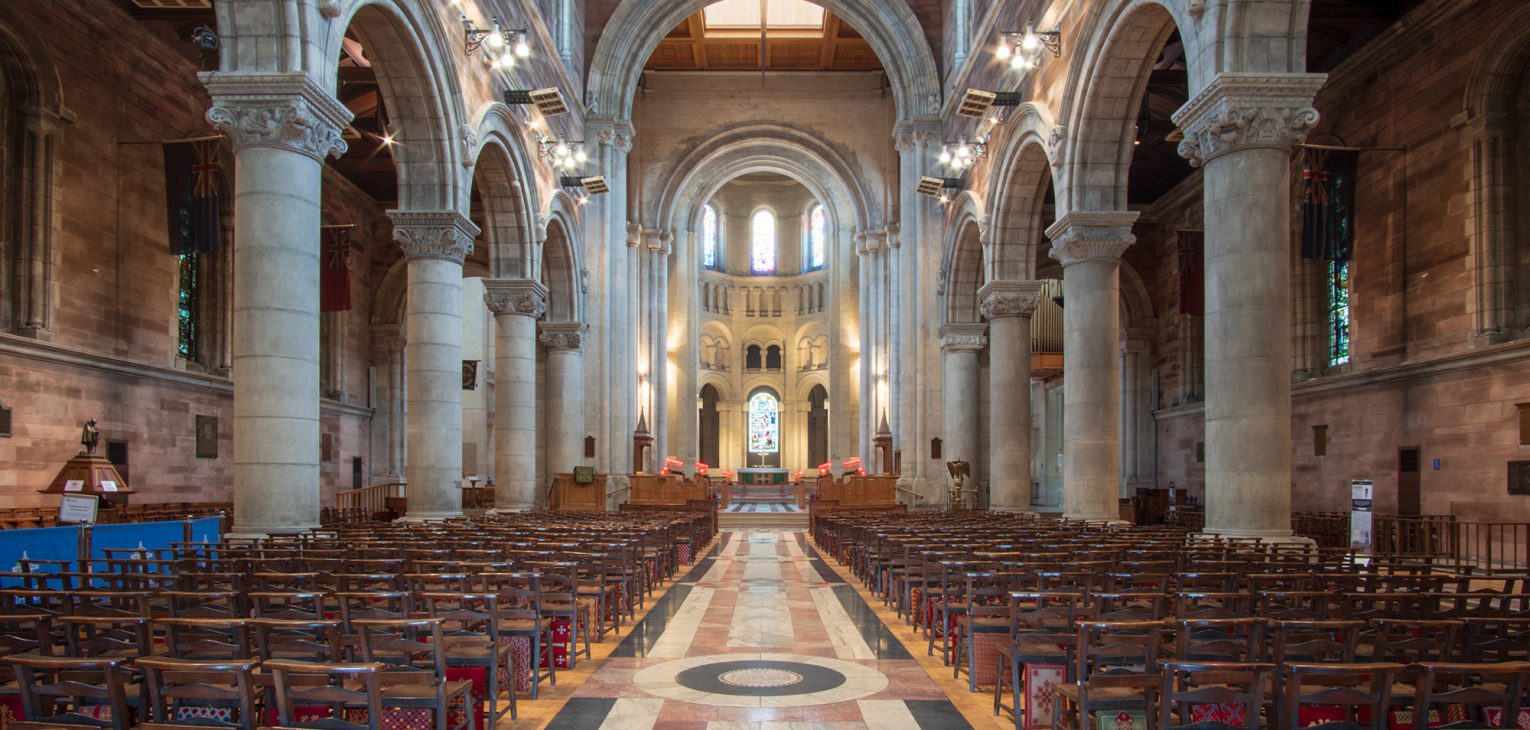Imagine heading into your parish church to worship on a Sunday while the walls of this great Cathedral were literally raised around you...
That is what happened during the construction of Belfast Cathedral, known locally as St Anne’s, to whom the building is dedicated. This site in Donegall Street originally housed a smaller church in Classical style, a gift to the town of Belfast by its landlord, Lord Donegall.
This Parish Church was consecrated in 1776 and called St Anne’s, after the mother of the Virgin Mary. Lord Donegall’s wife was also called Anne, which probably determined the choice of name.

The project to build a cathedral for Belfast was launched in 1895. Architects were appointed, both Belfast men, Thomas Drew, who provided the plans, and WH Lynn. The style chosen was Romanesque—characterised by semi-circular arches—and the building would be basilican in form.
Laying The
Foundation Stone
The foundation stone was laid on September 6th 1899. Building began around the old church, which continued to be used for services until the end of 1903. By which time the tower of little St Anne’s had been dismantled and the church was no longer visible from the street! For five months the congregation worshipped in the Clarence Place Hall in May Street.
The only feature of the old St Anne’s Church to remain in the present-day Cathedral is the Good Samaritan Window.
To erect a great building like the Cathedral in the centre of Belfast it is necessary to drive piles through a bed of soft clay—sleech—to a firmer stratum. Wooden piles 50 feet long support the walls and pillars of the nave. This ground problem explains why Belfast Cathedral has a light-weight spire instead of a heavy central tower.
The first part of the building to be constructed, the nave, was consecrated on June 2nd 1904.

For nearly 80 years the cruciform church was a work in progress, with sections completed bit by bit: Crypt and foundations for a proposed crossing tower 1922-24; west front 1925-27; baptistery 1928; Chapel of the Holy Spirit 1932; apse and ambulatory 1959; transepts 1974 and 1981. A temporary brick chancel did duty until the east end was completed. The stainless steel Spire of Hope was lowered into place in 2007.
As you enter, a feature of the flooring is the labyrinth, an image of the journey of life.
Many of the decorative elements of the building have been given in memoriam. The visitor should note the patterns in their arrangement. Each of the mighty pillars represents an aspect of life in our province: North side - science, linen industry, healing, agriculture, music; south side - theology, shipbuilding, freemasonry, the arts, womanhood. Half columns (responds) represent cardinal virtues - courage, justice, temperance and wisdom.
Portrait heads above the nave pillars depict distinguished churchmen, and one woman, the hymn-writer, Mrs CF Alexander.
In each corner of the nave there is an archangel: Gabriel, Michael, Raphael, and Uriel. The nave windows depict major figures from the Old Testament; temple-building is the subject of the west windows; windows in the ambulatory represent five of St Paul’s fruits of the spirit.
Sparkling at the west end are mosaics representing Creation, St Patrick’s return to Ireland and Isaiah’s vision in the Temple. Above the West Door is a memorial to choir men who lost their lives in the war of 1914-1918.

Artists responsible for these decorative elements include Morris Harding, Rosamond Praeger and Esmond Burton, sculptors, Gertrude and Margaret Martin, mosaicists and Wilma Kirkpatrick and Helen O’Hare, needlework.
Other items to interest the visitor include the tomb of Lord Carson; the Titanic Pall; the State Seats; a selection of the Cathedral’s silver, including pieces from the former parish church in High Street, in the Treasury; the Majury Prayer Book and regimental colours in the Military Chapel; the organ; the reredos by Rosamond Praeger (‘As the Shadow of a great rock’); the 1914-1918 War Memorial Lectern; the kneelers, the work of the Tapestry Guild; and the Bishops’ thrones.
We invite you to visit to see this wonderful history for yourself.
